





|
STUDENT DIGITAL NEWSLETTER ALAGAPPA INSTITUTIONS |

|
"Cheap imodium 2mg with mastercard, gastritis kefir".
I. Faesul, M.A., M.D., Ph.D.
Professor, University of South Carolina School of Medicine Greenville
Maxillary and mandibular molar positions relative to their supporting bone were maintained gastritis diet lentils generic 2 mg imodium with visa. This creates an intrusive force on teeth in contact with the blocks gastritis diet vegan 2mg imodium sale, which is generated by the stretch of the facial soft tissues gastritis symptoms in telugu purchase imodium 2 mg otc. C gastritis diet soy sauce 2 mg imodium visa, High-pull headgear with the facebow inserted into tubes in a functional appliance with bite blocks. F, Cephalometric superimposition showing continued downward movement of the chin but no increase in the mandibular plane angle. The major effect of treatment was retraction of the protruding maxillary incisors into a premolar extraction space; little if any modification of the growth pattern occurred. Facial Asymmetry in Children Although almost everyone has some facial asymmetry, asymmetric development of the jaws severe enough to cause a problem is relatively rare. Asymmetric excess is due to hemimandibular hypertrophy, which rarely develops before adolescence and cannot be managed with growth modification techniques. When a condylar fracture is diagnosed in a child, maintaining function is the key to normal growth. Function does not mean simple opening and closing hinge movements but must also include translation of the mandibular condyles. Translation is necessary for normal growth in the long term and for regeneration and stretch of the associated soft tissues in the short term. Fortunately, most jaw fractures in preadolescent children can be treated with little or no surgical manipulation of the segments and little immobilization of the jaws because the bony segments are self-retentive and the healing process is rapid. Treatment should involve short fixation times (usually maintained with intraoral intermaxillary elastics) and rapid return to function. A functional appliance during the postinjury period can be used to minimize any growth restriction. The appliance is a conventional activator or bionator-type appliance that symmetrically advances the mandible to nearly an edge-to-edge incisor position. Using this appliance, the patient is forced to translate the mandible, and any remodeling can occur with the mandible in the unloaded and forward position. Many condylar fractures are not diagnosed at the time of injury, so when a child with asymmetric mandibular deficiency is seen, trauma is the most likely cause even if an injury is not reported. The key to establishing the prognosis for growth modification is the extent to which the affected side can translate. Even if the mandible deviates to the affected side on opening, reasonably normal growth is possible if some degree of translation occurs. Hybrid functional appliances (see Figure 13-59, G and H) offer a way to obtain more growth on one side than the other. Although these appliances may appear confusing, they are simply various components logically combined to achieve specific purposes for individual patients. Surgical intervention in an asymmetry situation (or other facial growth problem) prior to adolescence has only one goal: to create an environment in which growth is possible. Therefore surgery is indicated only when abnormal growth is progressively making a problem worse, as in ankylosis that keeps one side from growing or too much growth at one condyle. E, the panoramic radiograph showed the classic appearance of a unilateral condylar fracture. The injury almost surely occurred at age 2 when she fell but was not diagnosed at the time. F, Note the two mandibular borders on the cephalometric radiograph due to the shorter ramus on the left. G and H, She was treated with a series of hybrid functional appliances, with buccal and lingual shields on the left, and a bite block anteriorly and on the right. The objective was to encourage mandibular growth and tooth eruption on the deficient left side and restrain eruption on the right. It is important to keep the tongue from between the teeth on the side where eruption is desired, thus the lingual shield on the left side (cannot be seen in the photos) was a critically important part of the appliance. Note the regeneration of the left condyle (seen clearly in the panoramic view) and reduction in the difference in height of the two mandibular rami, shown in the ceph. O and P, Facial and (Q and R) intraoral views at age 13, with nearly complete resolution of the facial asymmetry, although the mandible still deviates to the left on wide opening. Functional appliance treatment was discontinued at age 10, and there was no further orthodontic therapy.
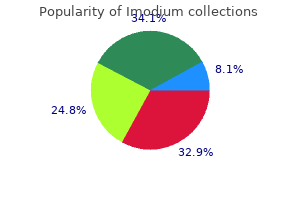

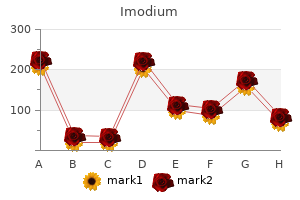
In contrast gastritis diet 22 2 mg imodium mastercard, an active retainer is expected primarily to move teeth -no significant skeletal change is expected gastritis diet 8 month purchase imodium 2 mg line. An activator or bionator as an active retainer is indicated if not more than 3 mm of occlusal correction is sought gastritis diet green tea discount 2 mg imodium mastercard. The correction is achieved by restraining the eruption of maxillary teeth posteriorly and directing the erupting mandibular teeth anteriorly gastritis eating out quality imodium 2 mg. In that circumstance, a partial fixed appliance with bonded brackets only on the segment to be realigned is the most practical approach. A, Bonded appliance from first premolar to first premolar, with a coil spring on 16 steel wire to open space for the rotated and crowded right central incisor. B and C, Alignment of the incisors on rectangular NiTi wire after space was opened, which was completed 4 months after treatment began. At this point a fixed lingual retainer can be bonded before the brackets and archwire are removed. Reitan, K: Tissue rearrangement during the retention of orthodontically rotated teeth. Al-Nimri, K, Al Habashneh, R, Obeidat, M: Gingival health and relapse tendency: a prospective study of two types of lower fixed retainers. Treatment for Adults Adult orthodontics has been the fastest-growing type of orthodontic treatment in recent years, going from a relative rarity as late as the 1970s to a commonplace procedure today. In the United States, adults (those over age 18 at the start of treatment) now comprise about 30%of all patients receiving comprehensive orthodontic treatment. A similar trend is occurring worldwide in orthodontic practices, trailing behind the U. This does not mean that the treatment procedures can be the same as for adolescents or children. Perhaps the biggest difference is that for adults, other types of dental treatment almost always are required, which makes interdisciplinary interaction and cooperation a necessity from the beginning. The prevalence of periodontal problems increases with age, and even young adults are likely to require some level of periodontal care by either a generalist skilled in doing this or a periodontist. As adult patients become older, orthodontic treatment must be done in the context of a used dentition with worn teeth and restorative implications, not a new one as with adolescents. The absence of growth in adults (or more accurately, the very small increments of continuing growth) means that growth modification is not a treatment option-everything has to be done with either tooth movement, restorative dentistry, or orthognathic surgery. In a sense, planning orthodontic treatment for adults can be easier because there are no uncertainties related to the amount and direction of growth, but treating adults requires a high level of technical skill, knowledge of other disciplines, and an understanding of biomechanics. There are several other considerations that are particularly important in the treatment of adults: 1Treatment planning must involve all the dentists who will play a role in the treatment. With a group of practitioners, an important question is "Who is the conductor of this orchestra? This can be accomplished with a diagnostic setup/waxup that can be used as a diagnostic and communication tool among the treatment team and between them and the patient. This has to be evaluated in the context of cost and risk versus benefit to the patient from various treatment procedures, so discussion of treatment options and genuinely informed consent are very important. As we have noted earlier in this book, this means bringing both dental and periodontal disease under control, which may add endodontics and oral surgery to the types of treatment. In the chapters that follow, Chapter 18 focuses on orthodontic treatment in interaction with other dental specialists except maxillofacial surgeons, and Chapter 19 adds orthognathic surgery to the considerations in planning and implementing coordinated treatment. Although the focus is on orthodontics in both chapters, a discussion of treatment procedures by other dental specialists has to be included in the discussion of interdisciplinary treatment. In Chapter 19, the surgical options and the surgeonĀorthodontist interaction in the sequencing and management of treatment receive particular attention.? Chapter 18 Special Considerations in Treatment for Adults Adults who seek orthodontic treatment fall into two quite different groups: (1) younger adults (typically under 35, often in their 20s) who desired but did not receive comprehensive orthodontic treatment as youths and now seek it as they become financially independent and (2) an older group, typically in their 40s or 50s, who have other dental problems and need orthodontics as part of a larger treatment plan. They may or may not need extensive treatment by other dental specialists but frequently need interdisciplinary consultation. The second group seek to maintain what they have, not necessarily to achieve as ideal an orthodontic result as possible. For them, orthodontic treatment is needed to meet specific goals that would make control of dental disease and restoration of missing teeth easier and more effective, so the orthodontics is an adjunctive procedure to the larger periodontal and restorative goals. Treatment for older adults has been the fastest growing area in orthodontics during the last decade.
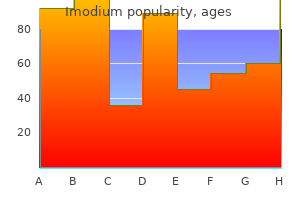
Late Primary and Early Mixed Dentition Treatment Many of the orthodontic problems of cleft palate children in the late and early mixed dentition result not from the cleft itself but from the effects of surgical repair gastritis ulcer trusted 2mg imodium. Although the techniques for repair of cleft lip and palate have improved tremendously in recent years gastritis diet treatment medications generic imodium 2mg online, closure of the lip inevitably creates some constriction across the anterior part of the maxillary arch and closure of a cleft palate causes at least some degree of lateral constriction gastritis diet ņķņ buy imodium 2mg without a prescription. As a result viral gastritis symptoms order 2 mg imodium overnight delivery, surgically treated cleft palate patients have a tendency toward both anterior and lateral crossbite, which is not seen in patients with untreated clefts. This result is not an argument against surgical repair of the lip and palate, which is necessary for esthetic and functional (speech) reasons. It simply means that orthodontic treatment must be considered a necessary part of the habilitation of such patients. Orthodontic intervention is often unnecessary until the permanent incisor teeth begin to erupt but is usually imperative at that point (Figure 7-49, E to J). As the permanent teeth come in, there is a strong tendency for the maxillary incisors to erupt rotated and often in crossbite. The major goal of orthodontic treatment at this time is to correct incisor position and prepare the patient for an alveolar bone graft. The objective is to have a permanent tooth erupt through the grafted area so that the cleft is obliterated. An erupting tooth brings bone with it, creating new bone beyond the limits of the previous graft. If the laterals are missing, the graft can be delayed but should be done before the permanent canines erupt. Any necessary alignment of incisors or expansion of posterior segments should be completed before the alveolar grafting. The alveolar graft now is a routine part of contemporary treatment, and doing it at the right time is critically important. Early Permanent Dentition Treatment As the canine and premolar teeth erupt, posterior crossbite is likely to develop, particularly on the cleft side in a unilateral cleft patient, and the teeth are likely to be malaligned (Figure 7-50). The more successful the surgery, the fewer the problems, but in essentially every instance, fixed appliance orthodontic treatment is necessary in the late mixed or early permanent dentition. New bone fills in the grafted cleft as the canine erupts, which makes it possible to close spaces due to missing teeth, and this now is a major objective of this phase of treatment (see Figure 7-49, I and J). In that circumstance, a resin-bonded bridge that provides a semipermanent replacement for missing teeth can be extremely helpful. Orthodontic treatment is often completed at age 14, but a permanent bridge in many instances cannot be placed until age 17 or 18. The semipermanent fixed bridge is preferable to prolonged use of a removable retainer with a replacement tooth. Orthognathic Surgery for Patients with Cleft Lip and Palate In some patients with cleft lip and palate, more often in males than females, continued mandibular growth after the completion of active orthodontic treatment leads to the return of anterior and lateral crossbites. This result is not so much from excessive mandibular growth as from deficient maxillary growth, both anteroposteriorly and vertically, and it is seen less frequently now because of the improvements in cleft lip/palate surgery in recent years. Orthognathic surgery to bring the deficient maxilla downward and forward may be a necessary last stage in treatment of a patient with cleft lip or palate, typically at about age 18 if required. After this, the definitive restorative work to replace any missing teeth can be carried out. A pharyngeal flap to control leakage of air through the nose often is needed after maxillary advancement in cleft patients. There has been a striking decrease in recent years in the number of teen-age cleft patients needing either prosthodontic replacement of missing teeth or orthognathic surgery to correct maxillary deficiency. The standard of care now is atraumatic palatal surgery that minimizes interferences with growth, and closure of the space where teeth are missing, made possible by alveolar grafts in the early mixed dentition. Pancherz, H, Fackel, U: the skeletofacial growth pattern pre- and post-dentofacial orthopedics. Biomechanics, Mechanics, and Contemporary Orthodontic Appliances Orthodontic therapy depends on the reaction of the teeth, and more generally the facial structures, to gentle but persistent force.
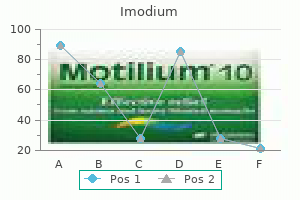
Syndromes
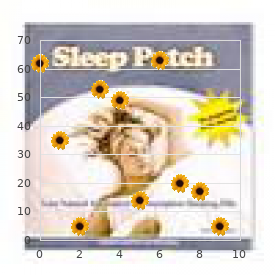
By then gastritis diet untuk cheap 2 mg imodium with amex, new bone has filled in the space at the suture gastritis high fiber diet order 2mg imodium otc, and the skeletal expansion is stable gastritis bloating generic 2 mg imodium free shipping. The aspect of rapid expansion that was not appreciated initially was that orthodontic tooth movement continues after the expansion is completed gastritis diet 9000 buy imodium 2mg amex, until bone stability is achieved. It is possible, of course, for tooth movement to allow bony segments to reposition themselves while the teeth are held in the same relationship to each other, and this is what occurs during the approximately 3 months required for bony fill-in at the suture after rapid expansion. During this time, the dental expansion is maintained, but the two halves of the maxilla move back toward each other, which is possible because at the same time the teeth move laterally on their supporting bone. If the changes were represented graphically, the plot for rapid expansion would look like Figure 7-9, A. Note that when the expansion was completed, 10 mm of total expansion would have been produced by 8 mm of skeletal expansion and only 2 mm of tooth movement. At 4 months, the same 10 mm of dental expansion would still be present, but at that point there would be only 5 mm of skeletal expansion, and tooth movement would account for the other 5 mm of the total expansion. Rapid activation of the jackscrew, therefore, is not an effective way to minimize tooth movement. If a jackscrew device attached to the teeth is activated at the rate of one-quarter turn of the screw (0. Rapid expansion was recommended when the technique was reintroduced in the 1960s because it was thought that this produced more skeletal than dental change. As the graph indicates, this is true initially: the teeth cannot respond, and the suture is opened. With 10 mm of expansion in 2 weeks, there might be 8 mm of skeletal change and only 2 mm of tooth movement at the time the expansion is completed. It was not appreciated at first that during the next 8 weeks, while bone is filling in, orthodontic tooth movement continues and allows skeletal relapse, so that although the total expansion is maintained, the percentage due to tooth movement increases and the skeletal expansion decreases. With slow expansion at the rate of 1 mm per week, the total expansion is about half skeletal/half dental from the beginning. The outcome of rapid versus slow expansion looks very different at 2 weeks but quite similar at 10 weeks. Ten mm of expansion over a 10-week period, at the rate of 1 mm per week, would consist of 5 mm of dental and 5 mm of skeletal expansion (Figure 7-9, B). Thus the overall result of rapid versus slow expansion is similar, 5 but with slower expansion a more physiologic response is obtained. Implant-Supported Expansion Now that bone screws can be placed in the maxilla to serve as temporary skeletal attachments, force can be applied directly to the maxilla instead of using the teeth to transfer force to the bone. The expansion device has a wire framework that clips over the exposed head of the bone screws. Note that although the molars are attached to the expansion device, the attachment is to a bar along which the attachment can slide, so the expansion force will be only against the screws. C, Progress, as expansion continues and the molar attachment slides along the bar. With a jackscrew attached to skeletal anchors, minimum disruption of the suture would be desired, so slow rather than rapid expansion would be indicated. Following expansion by any means, a retainer is needed even after bone fill-in seems complete. The expansion appliance should remain in place for 3 to 4 months and then can be replaced with a removable retainer or other retention device. Extraoral force to the maxilla (headgear) was utilized by the pioneer American orthodontists of the late 1800s (Figure 7-11), who found it reasonably effective. At a later stage in the United States, guide planes consisting of a wire framework extending down from an upper lingual arch were used to force patients to advance the mandible upon closure, also with the idea of stimulating mandibular growth. Because of this, these methods and with them the idea of mandibular growth stimulation fell into disrepute in the United States, but growth modification with "functional appliances" that hold the mandible forward remained the mainstay of European orthodontics. By the 1980s, clinical success with functional appliances, including impressive amounts of mandibular growth in some cases, had been clearly demonstrated on both sides of the Atlantic, but questions remained as to whether these appliances could really stimulate mandibular growth. Growth stimulation can be defined in two ways: (1) as the attainment of a final size larger than would have occurred without treatment or (2) as the occurrence of more growth during a given period than would have been expected without treatment.